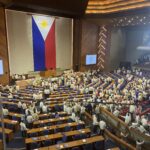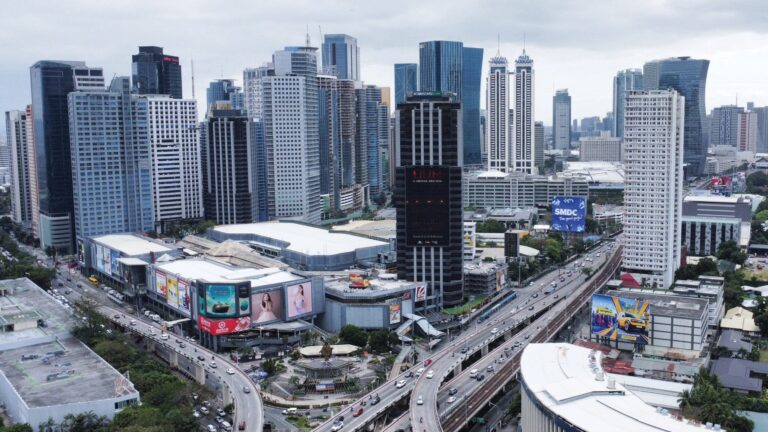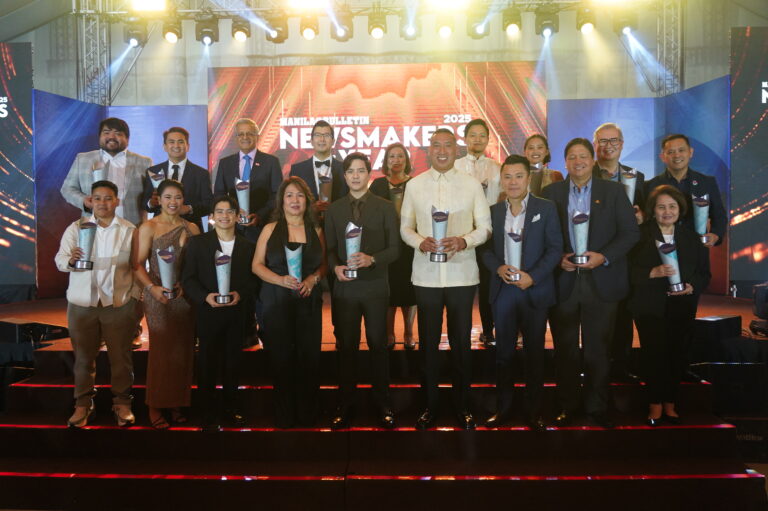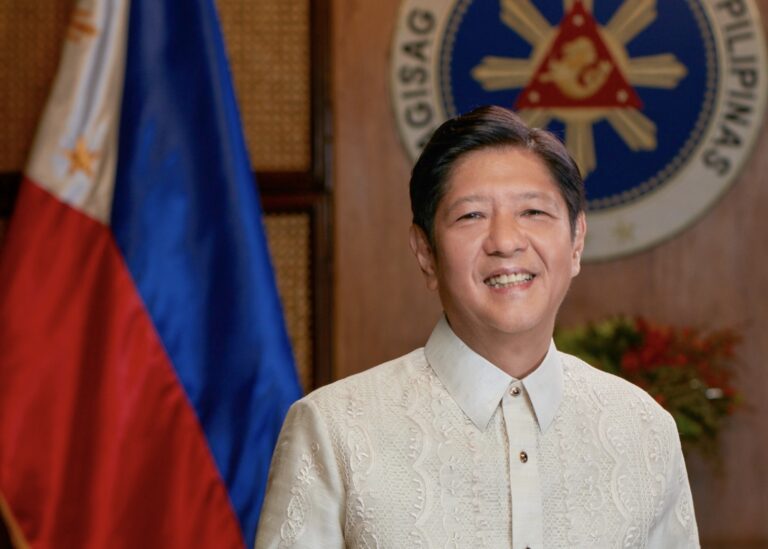In celebrating its 125th anniversary, the Manila Bulletin honors the sports icons, who helped shape the Philippines’ vision of cultivating a culture of excellence that has become a footprint for aspiring athletes from one generation to anotherThe Philippines is home to dreamers who would soon become the toasts of local and international sports.These individuals planted …
In celebrating its 125th anniversary, the Manila Bulletin honors the sports icons, who helped shape the Philippines’ vision of cultivating a culture of excellence that has become a footprint for aspiring athletes from one generation to another
The Philippines is home to dreamers who would soon become the toasts of local and international sports.
These individuals planted the seeds and bore the fruit of their hard work in the biggest competitions, bringing pride and glory as the country enjoyed its lofty status as one of the powerhouses from regional tournaments to Olympic levels.
From the late basketball star Carlos Loyzaga, who bannered the Nationals to a bronze medal finish in the 1954 FIBA World Championship in Rio de Janeiro, Brazil, to trackster Lydia de Vega-Mercado, Asia’s fastest woman for eight years, this island nation produced some of the best athletes in the world.
Who will forget boxers Gabriel “Flash” Elorde, and Francisco Guilledo who is commonly known as Pancho Villa? Teofilo Yldefonso was also a prominent swimmer back then, along with Pinky Brosas, a glaring figure best remembered as a mentor to future Olympians.
These icons helped shape the country’s vision of cultivating a culture of excellence, leaving a lasting legacy that became a footprint for aspiring athletes from one generation to another.
‘The Big Difference’: Carlos ‘Caloy’ Loyzaga (Aug. 29, 1930 – Jan. 27, 2016)
A household name when it comes to basketball, Caloy Loyzaga has been considered as one of the best Filipinos to ever play the game after leading the Philippine squad to its first and only podium finish in the world championship, where he was also part of the All-Tournament second team.
Playing under the tutelage of the late Herminio Silva along with stars Ponciano Saldaña and Lauro Mumar, the six-foot-three-inch center, relatively short in today’s standard, stood tall and bannered the Nationals against France, 66-60, in the battle for third place, the best finish for an Asian country in history.
The national team continued its supremacy with Loyzaga steering the squad and bagging four consecutive gold medals in Asian Games from 1951 to 1962. He also spearheaded the country’s ruling of Asian Basketball Confederation Championship in 1960 and 1963.
The eight-time MICAA and three-time NCAA champion was inducted into the 2023 FIBA Hall of Fame.
He died in 2016 due to a heart attack.
Asia’s fastest woman: Lydia de Vega-Mercado (Dec. 26, 1964 – Aug. 10, 2022)
Lydia de Vega was a force to be reckoned with in the 1980s as she topped the women’s 100-meter event of the Asian Games twice in a row (1982 New Delhi, 1986 Seoul).
The pride of Meycauayan, Bulacan also stamped her class in the Asian Athletics Championships where she copped four golds, a silver, and four bronzes in five editions of the biennial tilt.
She captured nine golds and two silvers in the Southeast Asian Games and received the country’s Athlete of the Year plum thrice (1981, 1986, and 1987).
De Vega retired in 1994 and continued her career as an athletics coach in Singapore before succumbing to breast cancer in 2022.
King of super featherweight: Gabriel ‘Flash’ Elorde (March 25, 1935 – Jan. 2, 1985)
Before eight-division world champion Manny Pacquiao conquered the pro boxing scene, there was another southpaw fighter in Gabriel “Flash” Elorde who brought pride and joy for the Philippines in the 1950s up to his retirement in the early 1970s.
The Cebuano slugger held the super featherweight belt in seven years—the longest reign in that weight class ever—after successfully defending his title 10 times, utilizing his powerful punches and impeccable speed, which his multiple rivals failed to overcome.
Elorde fought professionally in 118 contests, winning 89 with 33 via knockout against 27 defeats and two draws. With a stellar career, his Filipino fans turned Elorde into a sports and cultural icon. He died due to lung cancer.
Forgotten champion: Pancho Villa (Aug. 1, 1901 – July 14, 1925)
Pancho Villa had a short-lived career, but he etched his name into history books as the first-ever world champion from Asia.
The Negrense pug made headlines after winning the world belt in 1923. He dismantled Jimmy Wilde via knockout in the seventh round of their title bout in front of 20,000 fans, who were shouting “Viva, Villa!” at the Polo Grounds in New York City.
Villa returned on Philippine soil like a national hero, greeted by thousands of fans in Manila. He wrapped his pro career with a 89-8-4 win-loss-draw card and faced a tragic death in America due to complications from a tooth extraction—17 days before his 24th birthday.
The Skywalker: Samboy Lim (April 1, 1962 – Dec. 23, 2023)
One of most beloved players in the country, Samboy Lim rose to popularity in the PBA in the 1980s, displaying kindness on and off the court while being a threat to his rivals due to his aerial exploits, which awed his fans.
The “Skywalker” soared. He was an achiever in his heyday, winning nine championships—including a Grand Slam in 1989—with the San Miguel franchise. He was a five-time All-Star including an MVP award, a two-time Mythical Second Team, and a Hall of Fame inductee in 2009.
His No. 9 jersey was retired by the San Miguel Beermen.
Lim also stood out in international competitions after winning golds in the Southeast Asian Games (1983, 1985), FIBA Asia Championship (1985), and Asia Champions Cup (1984). He also took home silver and bronze medals in the Asian Games (1986, 1990).
A soldier and tanker: Teofilo Yldefonso (Nov. 5, 1903 – June 19, 1942)
Teofilo Yldefonso was a prominent name, especially in local swimming and among those who aspired to follow in his footsteps while training inside the Rizal Memorial Sports Complex.
The Ilocano swimmer, who also fought in World War 2 against the Japanese troops in Bataan, was the first Southeast Asian and Filipino to snare a medal and become a multi-medalist in the Olympics.
Yldefonso bagged his first bronze in the 1928 Amsterdam Games, then secured his second bronze in the following edition in the 1932 Los Angeles Olympics, both of which he plucked in the men’s 200m breaststroke category. He was also a four-time gold winner in the Far Eastern Championship Games.
According to reports, Yldefonso died in a concentration camp in Capas, Tarlac. His body was never recovered.
A master of masters: Pinky Brosas (Dec. 19, 1955 – Oct. 3, 2024)
Pinky Brosas, an Olympian and an Asian Games silver medalist, made a huge impact in local sports after serving as coach for the national team in three editions of the Summer Games in 1988, 2008, and 2012.
He mentored several swimming stars, including Miguel Molina, Eric Buhain, and Akiko Thomson. Buhain and Thompson thrived in the sport after winning multiple gold medals in the Southeast Asian Games then eventually becoming Olympians.
Brosas earned his first and only silver in the 4x100m event of the 1970 Asiad in Bangkok, Thailand.
Undeterred Kume: Manolo ‘Chino’ Trinidad (July 23, 1967 – July 13, 2024)
Chino Trinidad, a seasoned sports journalist and son of former columnist Recah and Fe Lacsamana, shared many inspiring stories of Filipino athletes through his platforms in a broadcasting career that spanned decades.
Trinidad covered Pacquiao in many of his US fights, while also delivering updates on billiards icon Efren “Bata” Reyes, Gilas Pilipinas, and many more throughout his life as a sports correspondent.
He also served as a commissioner in the now defunct Philippine Basketball League for 10 years.
Chino passed away due to cardiac arrest in July 2024.






